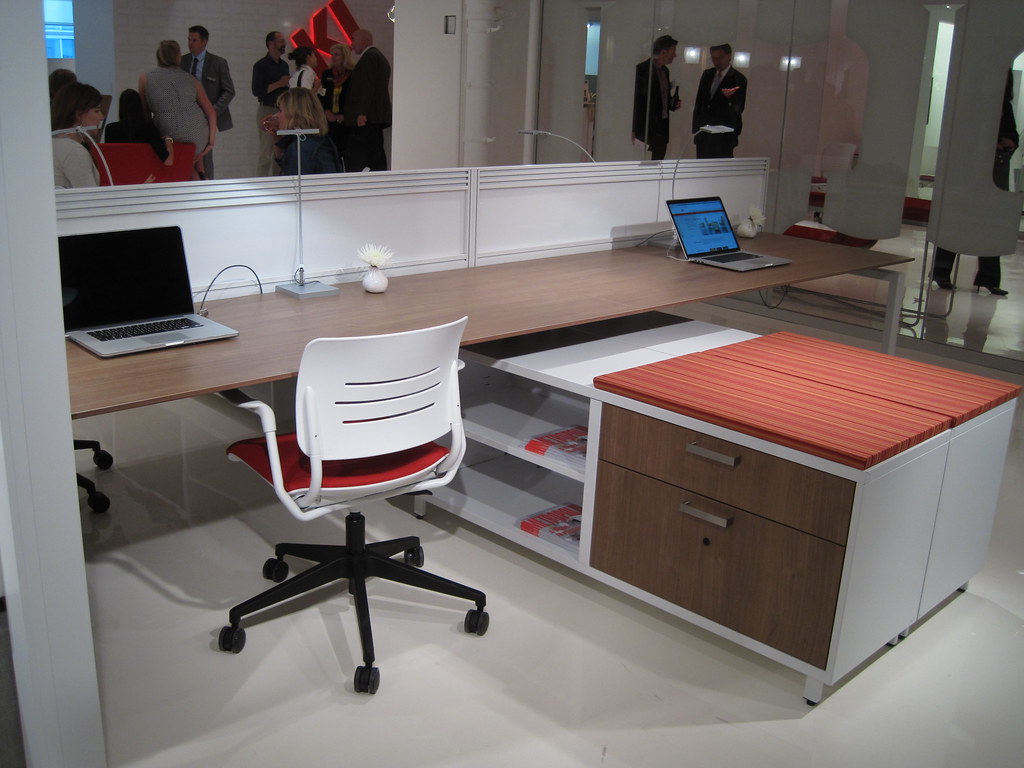The arrangement and style of your office, together with the furniture you select, can significantly affect how comfortable and productive your employees are. Whether you’re setting up a new workstation or remodeling an existing one, choosing the right office furniture is a crucial choice that goes beyond design. This guide will go over the factors to consider and the best methods for Selecting office furniture that will increase worker comfort and productivity.
The Importance of Office Furniture
Office furniture serves as the framework for your workstation and is more than just desks and chairs. Properly chosen office furniture can boost productivity, promote worker wellbeing, and advance your company’s performance as a whole. Why it matters is as follows:
1. Productivity
The right furniture can promote productivity by creating a workspace that minimizes distractions and encourages focus. Ergonomically designed furniture can also help reduce physical discomfort and fatigue, allowing employees to work more efficiently.
2. Comfort
Your employees’ well-being is bolstered by comfortable furniture, which is critical for preserving their health and motivation. Back pain, repetitive strain injuries, and a decline in job satisfaction can result from uncomfortable seats or poorly built workstations.
3. Beautifying
The way your office looks can make a big difference in how people view your business. Stylish and well-designed furniture can leave a good impression on customers, guests, and staff.
4. Adaptability
Making the most of your office space can be achieved with furniture that is flexible and versatile. Furniture that is flexible or modular may be easily reconfigured to meet shifting needs and team sizes.
5. Brand Image
Your choice of office furniture can convey your company’s values and culture. The right furniture aligns with your brand identity and creates a professional atmosphere that resonates with clients and employees.
Factors to Consider When Choosing Office Furniture
Now that we know the importance of Office furniture, let’s examine the main elements to take into account while choosing the appropriate items for your workspace:
1. Functionality
Consider the primary functions of the furniture. Does it need to accommodate individual workstations, collaborative spaces, or both? Ensure that the furniture you choose aligns with the specific needs of your office.
2. Ergonomics
For the comfort and well-being of employees, ergonomics is essential. Invest in furniture that encourages good posture and reduces the chance of strain injuries, such as sit-stand desks and ergonomic chairs.
3. Caliber
When it comes to workplace furniture, quality counts. Long-term cost savings can be achieved by choosing well-made, sturdy parts, as they will last longer.
4. Space Planning
Consider the layout and available space in your office. Measure the area and plan the arrangement of furniture to maximize space and functionality. Avoid overcrowding, which can lead to a cluttered and unproductive workspace.
5. Aesthetics
Select furniture that complements the overall design and style of your office. Whether you prefer a modern, minimalist, or traditional look, choose furniture that aligns with your aesthetic goals.
6. Budget
Set a realistic budget for your office furniture and stick to it. Quality doesn’t always equate to high costs, so research and choose pieces that offer both quality and affordability.
7. Durability
Office furniture should withstand daily wear and tear. Look for materials and finishes that are easy to clean and maintain, ensuring your investment lasts.
8. Sustainability
Consider eco-friendly options if your company values sustainability. Look for furniture made from recycled materials with certifications such as GreenGuard for low emissions.
9. Brand Identity
Your office furniture should reflect your brand identity. Colors, shapes, and materials can communicate your company’s culture and values to both employees and visitors.
10. Employee Input
Don’t forget to involve your employees in the decision-making process. They will be the ones using the furniture daily, so their input can provide valuable insights into their needs and preferences.
Types of Office Furniture
You must select a variety of furniture types to create a well-rounded working space. Here are some important things to think about:
1. Workstations
The center of every workplace area is the desk. Whether your employees prefer open-plan workstations, classic sit-down desks, or sit-stand desks, choose desks that complement their work styles.
2. Office Chairs
Ergonomic chairs are essential to support employees’ comfort and productivity. Consider chairs with adjustable features, lumbar support, and breathable materials.
3. Meeting and Conference Tables
For collaboration and meetings, you’ll need meeting and conference tables. Ensure they are spacious enough to accommodate your team and equipped with appropriate cable management.
4. Storage Solutions
Storage solutions like cabinets, shelves, and filing cabinets are essential to maintaining an organized and clutter-free workspace.
5. Reception Furniture
Reception furniture sets the tone for visitors and clients. It should be comfortable and visually appealing to create a positive first impression.
6. Breakroom and Lounge Furniture
Creating comfortable and inviting breakroom and lounge areas encourages employees to take breaks and relax. Consider couches, tables, and even bean bags for a relaxed atmosphere.
7. Collaborative Furniture
For open workspaces and collaborative areas, choose furniture that encourages teamwork. This may include benching systems, modular seating, and flexible layouts.
The Role of Technology
In today’s modern offices, technology is a crucial component that often interacts with office furniture. When selecting office furniture, consider how technology integrates with it. For example:
Provide adequate cable management to keep wires and cords organized and out of sight.
Ensure that desks have built-in power outlets and USB ports for easy device charging.
Consider adjustable monitor arms to accommodate various screen configurations.
Choose furniture that can easily adapt to new technologies and accommodate future upgrades.
Testing and Trial Periods
Before making a large investment in office furniture, consider testing a few pieces or arranging a trial period. This allows employees to provide feedback and experience the furniture firsthand. Testing can help identify any issues or discomforts that might not be apparent during the selection process.
Conclusion
The selection you make when choosing office furniture can have a big impact on your company’s overall success, comfort, and productivity. You may design a workspace that promotes the productivity and well-being of your team by giving careful thought to elements like quality, ergonomics, usefulness, and cost. A workspace that reflects your company culture and values may also be created by incorporating your staff in the decision-making process and matching your furniture choices to your brand identification. Your office may become a place that encourages success, collaboration, and creativity with the correct furnishings.




